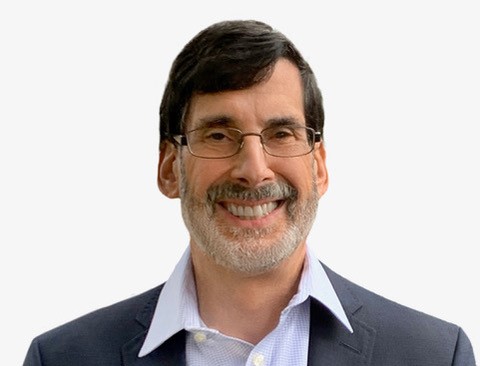By MICHAEL MILLENSON
Treating artificial intelligence as just one ingredient in a business success recipe was a prominent theme at the MedCity INVEST 2025 conference, with this AI “best practice” advice epitomized by high-profile start-ups Inato and Prenosis.
“You need to build a business model that makes sense, then use AI,” cautioned Raffi Boyajian, principal at CIGNA Ventures and a panelist at the MedCity INVEST 2025 conference in Chicago.
That sentiment was echoed and emphasized by fellow investors Aman Shah, vice president of new ventures at VNS Health, and Dipa Mehta, managing partner of Valeo Ventures. Both emphasized the necessity in a tough economic environment to find a “burning platform” that could immediately boost a customer’s bottom line.
In a separate panel, high-profile start-ups Inato and Prenosis accentuated that AI approach.
Innovation Customers Need
Inato was named by Fast Company magazine as one of the Most Innovative Companies of 2024, and that same year chosen by Fierce Healthcare as one of its Fierce 15. The Paris-based company connects drugmakers with otherwise hard-to-enroll patients for clinical trials by means of an AI-based platform that has attracted more than 3,000 community research sites in over 70 countries. By making clinical trials “more accessible, inclusive, and efficient,” in the company’s words, breaking a shocking pattern where 96% of trials do not include a representative population, Inato has established partnerships with more than a third of the top 30 pharmaceutical firms.
In describing its technology, Inato says it “assembled an AI agent to de-identify patient records, quickly determine which trials are relevant to each patient and evaluate patients against inclusion and exclusion criteria to assess eligibility” accurately and at scale. However, that phrase, “assembled an AI agent,” obscures a subtler process.
Liz Beatty, Inato’s co-founder and chief strategy officer, described using “off-the-shelf” large language models like ChatGPT and Claude and then optimizing them for a particular process with algorithms attuned to each model. As new models appear, the company adjusts accordingly. Although Beatty did not offer an analogy, there seemed an obvious parallel to a chef choosing among the right ingredients in the right proportions to ensure a recipe’s success.
Said Beatty, “I hear, ‘Let’s apply AI to everything.’ That’s not the right answer.” Investors are convinced enough that Inato does have the right answer that they’ve poured in $38.2 million, according to Pitchbook.
AI has also been central to the success of Prenosis. The company’s Sepsis ImmunoScore was the first Food and Drug Administration-approved tool using AI to predict the imminent onset of an often-deadly condition known as sepsis. Integrated into the clinical workflow, it was hailed by Time magazine as one of “the best inventions of 2024,” while Bobby Reddy Jr., Prenosis co-founder and chief executive officer, was subsequently named to the Time100 Health List recognizing influential individuals in global health.
Chicago-based Prenosis describes itself as an artificial intelligence company tailoring therapy to individual patient biology as part of “a new era of precision medicine.” As with Inato, though, the AI headline hides a more complex reality.
Sepsis is a heterogenous syndrome with close to 200 different symptoms possibly at play. “AI brings it together so we can understand the process of deterioration,” Reddy said. The company used machine learning to develop and validate a sophisticated algorithm, according to a New England Journal of Medicine study.
But the right AI was only one product ingredient. Prenosis also assembled a database of thousands of patients and set up a “wet lab” to find sepsis biomarkers – and to use for other conditions as the company expands its offerings – based on what is now 120,000 blood samples. Adding biomarkers to EHR data enabled the company to position itself as a more accurate, real-time complement to the sepsis tool Epic provides free to hospitals using its EHR.
“That’s our competitive advantage,” Reddy said.
Focused AI
Just as Inato focused on AI for its specific purposes, Prenosis also focused on a crucial goal. The AI was used “first and foremost to fit the FDA model for approval,” said Reddy.
Sepsis is caused by an overactive immune response to infection. It costs the U.S. health care system billions of dollars annually while claiming the lives of at least 350,000 people – more than all cancers combined, according to the Prenosis website. The World Health Organization has labeled sepsis a threat to global health, and the economic impact of just this one condition amounts to an average 2.7% of a nation’s health care costs, according to a 2022 study.
Unmentioned by Reddy at the INVEST conference was that a U.S. hospital’s performance in preventing and effectively treating sepsis is a factor in value-based payment by Medicare and in the hospital patient safety score published by the Leapfrog Group. A “burning platform,” indeed.
For Prenosis and Inato alike, AI best practice is based on practicality. As Reddy put it, AI is “just a tool” in product development.
Michael L. Millenson is president of Health Quality Advisors & a regular THCB Contributor. This first appeared in his column at Forbes







